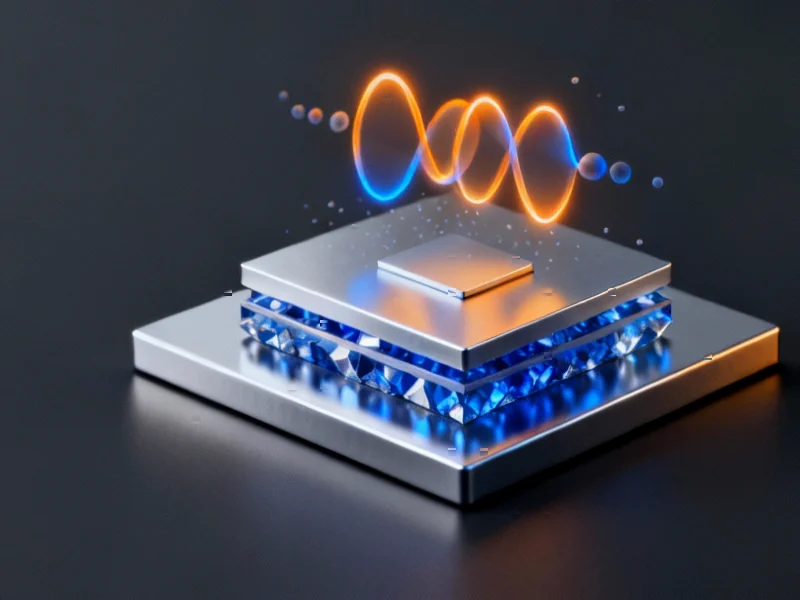Revolutionizing Memory and Computing with Ferroelectric Transistors
Ferroelectric field-effect transistors (FeFETs) represent a groundbreaking advancement in electronic devices, where a ferroelectric dielectric layer enables non-volatile memory and computational functions through sophisticated capacitance coupling. Unlike conventional transistors, FeFETs maintain their state without constant power, making them ideal for energy-efficient applications. The core mechanism involves the alignment of ferroelectric polarization with the gate electric field, which modulates charge carriers in the semiconductor layer. This interaction produces distinct hysteresis loops—clockwise for p-type and anticlockwise for n-type devices—that are pivotal for multi-level memory and in-memory computing systems. However, the full potential of FeFETs has been hampered by competing effects like charge trapping (CT), which can negate ferroelectric behavior and lead to volatile performance. Recent research, such as the study published in Nature Communications, delves into polarity-dependent modulations to overcome these limitations, opening new avenues for functionalized electronics.
Table of Contents
- Revolutionizing Memory and Computing with Ferroelectric Transistors
- Understanding the Ferroelectric and Charge Trapping Dynamics
- Polarity-Dependent Modulation: A Game-Changer in FeFET Design
- Experimental Advances with 2D Hybrid Perovskite Materials
- Implications for Future Electronics and Innovation
- Conclusion: Embracing Heterogeneity for Enhanced Performance
Understanding the Ferroelectric and Charge Trapping Dynamics
In FeFETs, the ferroelectric (FE) mechanism relies on the stable alignment of polarization to control semiconductor behavior, but it often faces interference from charge trapping at interface or bulk sites. CT generates an inherent electric field opposing the gate field, creating “dead layers” that resist polarization flipping. This results in hysteresis loops with reversed directions—anticlockwise in p-type and clockwise in n-type transistors—typically causing volatile synaptic updates. The trade-off between FE and CT has traditionally led to an “all or none” regulation in conventional FeFETs, limiting their adaptability. To address this, researchers have employed Technology Computer-Aided Design (TCAD) simulations to model the coupling between FE, CT, and channel carriers. By using n-type MoS₂ and p-type phosphorene (BP) as semiconductors, these simulations reveal how trap density, position, and semiconductor polarity influence hysteresis behavior. For instance, reducing trap density or enhancing FE strength shifts n-type devices from CT-dominated to FE-controlled states, highlighting the critical role of material engineering in optimizing performance.
Polarity-Dependent Modulation: A Game-Changer in FeFET Design
One of the most striking findings from recent studies is the polarity-dependent ferroelectric modulation, where the type of semiconductor channel dictates whether FE or CT dominates. In n-type MoS₂ FeFETs, electron majority carriers enhance trapping under positive gate voltages, generating a built-in field that suppresses dipole flipping and eliminates macroscopic ferroelectric effects. Conversely, p-type BP FeFETs under similar conditions exhibit FE-dominated hysteresis due to insufficient trapped electrons to form a counteracting field. This asymmetry allows for heterogeneous regulation, where trap engineering and channel polarity can be tailored to either inhibit or promote ferroelectric behavior. Transient simulations under pulsed gate voltages further support this, showing that electron traps reduce remanent polarization and that n-type devices have higher trapped electron densities. This insight paves the way for designing FeFETs with customized hysteresis properties, essential for applications like neuromorphic computing and low-power memory., according to market insights
Experimental Advances with 2D Hybrid Perovskite Materials
To validate these theoretical insights, researchers synthesized a two-dimensional hybrid organic-inorganic ferroelectric perovskite, (EATMP)PbBr₄ (abbreviated as ETPB). This material features a Dion-Jacobson phase structure with diamine cations linking perovskite layers, inducing in-plane spontaneous polarization at room temperature. X-ray diffraction (XRD) patterns confirm the successful synthesis and preferred orientation of ETPB thin films, with prominent peaks indicating well-preserved crystal structures. The tilted orientation of crystals relative to the substrate results in spontaneous polarization projecting both vertically and horizontally, as demonstrated through piezoelectric force microscopy (PFM). PFM measurements reveal switchable ferroelectric domains and phase contrasts independent of topography, confirming robust ferroelectric properties. Additional characterizations, including polarization-electric field hysteresis loops, show a coercive field of 0.3 MV/cm and remanent polarization of 1.1 μC/cm², underscoring ETPB’s suitability for practical devices. These experimental results align with simulation predictions, reinforcing the viability of polarity-dependent modulation in real-world applications., according to related coverage
Implications for Future Electronics and Innovation
The discovery of polarity-dependent ferroelectric modulations in 2D hybrid perovskite heterojunctions marks a significant leap forward in electronics. By leveraging the competition between FE and CT, developers can create FeFETs with programmable hysteresis, enabling more efficient multi-level memory, in-memory computing, and artificial synapses. The ability to control ferroelectric behavior through channel polarity and trap engineering reduces volatility and enhances device reliability. As research progresses, integrating these principles into commercial products could lead to faster, more energy-efficient technologies, from advanced sensors to brain-inspired computing systems. For those interested in the cutting-edge of material science and electronics, resources like Nature Communications offer valuable insights into ongoing developments., as detailed analysis
Conclusion: Embracing Heterogeneity for Enhanced Performance
In summary, the interplay between ferroelectric polarization and charge trapping in FeFETs is no longer a barrier but an opportunity for innovation. The polarity-dependent mechanisms uncovered through TCAD simulations and experimental validations with ETPB perovskites provide a roadmap for designing next-generation transistors. By focusing on asymmetric charge trapping and channel carrier types, researchers can achieve precise control over ferroelectric behavior, moving beyond homogeneous regulation. This approach not only addresses longstanding challenges in FeFET technology but also inspires new applications in flexible electronics and sustainable computing. As the field evolves, continued exploration of 2D materials and their heterostructures will undoubtedly unlock further possibilities, solidifying FeFETs’ role in the future of electronics.
Related Articles You May Find Interesting
- Breakthrough in Flexible Temperature Sensors: MWCNT-Reinforced Peano Structures
- Breakthrough Solar-Powered Catalyst Converts Ethane to Ethylene with Near-Perfec
- Philips 27E3U7903 Professional Monitor Analysis: 5K Thunderbolt 4 Powerhouse Cha
- OpenAI’s ChatGPT Atlas Redefines Web Browsing with Integrated AI Assistant
- Breakthrough MEMS Accelerometer Achieves Unprecedented Sensitivity and Range Thr
This article aggregates information from publicly available sources. All trademarks and copyrights belong to their respective owners.
Note: Featured image is for illustrative purposes only and does not represent any specific product, service, or entity mentioned in this article.



